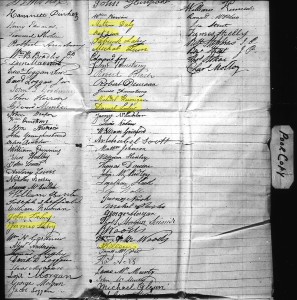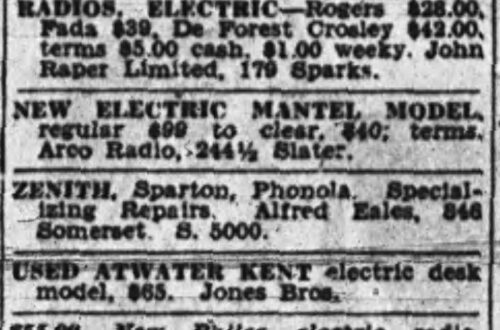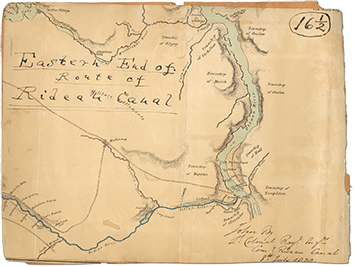As I mentioned in my previous post, there is now a huge amount of LAC (Library and Archives Canada) material at Canadiana.org’s Héritage website. This material includes 94 digitized microfilm reels of LAC’s Upper Canada Sundries (RG 5 A1), 1766-1841 series. Héritage describes the series as follows:
This series is part of the Civil Secretary’s Correspondence for Upper Canada and Canada West. It consists of letters, petitions, reports, returns and schedules, certificates, accounts, warrants, legal opinions, instructions and regulations, proclamations and other documents received by the Civil Secretary of Upper Canada, 1791-1841, together with copies of some documents of 1766-1809, made for reference purposes.
As every aspect of Ontario life was covered in the correspondence, there is much to offer for those interested in Ontario’s early history. There is also much material of genealogical interest: character references, land and settler petitions, family histories, licenses, pardons, requests for war losses compensation, etc.
— About the Records, Upper Canada Sundries, 1766-1841, Héritage (http://heritage.canadiana.ca/support/sundries)
The Upper Canada Sundries collection does include some finding aids, on microfilms C-9822, C-9823, C-9824, and C-9825. See the above-linked Canadiana.org page for more information on how to search the series.
And for some really good advice on how and why to search the Upper Canada Sundries, also see The Olive Tree Genealogy Blog (here, here, and here).
Did your Bytown area ancestor sign this petition?
That the cost of transmitting a Prisoner from Bytown to the Gaol at Perth is at least Five Pounds Currency, and that of 17 Prisoners confined in that Prison during the Quarter ending in September 1835, 13 were sent from Bytown.
— Petition of inhabitants of certain districts of Bathurst and Ottawa for division of their district, with Bytown as the capital of the new one, 18361
On microfilm C-6892 (images 1239-1252), there is a petition, dated [December?] 1836, of some (male) inhabitants of certain townships in the Bathurst and Ottawa districts. The petitioners were asking for the formation of a new administrative district, with Bytown as its capital, so that they would no longer have to travel to Perth, L’Original, and Cornwall to attend the King’s Bench and Quarter Sessions; and so that, as the above quote explains, they would no longer have to pay the costs of transporting prisoners from Bytown to the Perth Gaol. The Ottawa district townships are given as: Gloucester, Osgood [Osgoode], Cumberland and Russell. The Bathurst district townships are given as: Nepean, Goulburn, March, Huntly [Huntley], Torbolton, Fitzroy, Packenham [Pakenham], McNab, Horton, Ross, Westmeath and Pembroke (these last four would later become part of Renfrew County).

There are hundreds of names on the 1836 petition. If you think your ancestors might have been in the Bytown area by 1836, you might want to check this document.
Here is a page with many March Township names (see image at right, and click on image to view a larger version). I have highlighted the names that are especially of interest to me: John Lahy; James Lahy; Mathew [Matthew] Daly (husband of Ellen Killeen and son-in-law of Denis Killeen); Pat Quinn (son of Catherine Lahey and her first husband Patrick Quinn); Patrick Lahy; Michal [Michael] Quin (son of Catherine Lahey and her first husband Patrick Quinn); Michael Hourigan (son of Mary Lahey and Timothy Hourigan); Daniel Lahy (second husband of Catherine Lahey); and D. [Denis] Killeen. The name at the top of this page is that of Hamnett Pinhey, a large landowner and politician, and a leading member of the local elite.
And speaking of prisoners being transported from the Bytown area to the Gaol at Perth: It’s a bit odd to see the name Michael Hourigan followed immediately by that of Daniel Lahy, knowing the similar fate that awaited these two men. In November 1837, Daniel Lahey would be killed by his brother-in-law James Lahey; in April 1841, Michael Hourigan would be killed by his brother-in-law John Kelly (see The Queen vs. Kelly). And yes, both James Lahey and John Kelly were sent from March Township to the Perth Gaol (James Lahey ended up back in March, apparently having been acquitted of the crime; John Kelly served a sentence of one year’s hard labour at the Dominion Penitentiary in Kingston).

What percentage of adult male inhabitants of the above-named townships can be found on this petition? I have no idea. But I’m not sure that every name is that of an adult male. At image 1245, a page with many Huntley Township names (see image at left, and click on the image to view a larger version), I see the name James Morin (James Moran), but I also see a James Mourin, a Thomas Morne and an Alexander Morne. Could these two Mornes be James’s sons Thomas Moran and Alexander Michael Moran, who were about 14 and 6 years old, respectively, in 1836? and might one of the two James Morins/Mourins refer to James’s son James Moran, who was about 12 years old at the time? I am reasonably confident that the family of James Moran and Margaret Jamieson was the only Moran family in Huntley Township at the time. I am also somewhat confident that James Moran could not sign his name: my question “Did your ancestor sign this petition?” should really be “Is your ancestor listed on this petition?”
The petition can be found at images 1239 to 1252 of microfilm C-6892; the first page of names is at image 1242. A typewritten list of these names can be found in the finding aid, Upper Canada Sundries Finding Aid C-9824, images 388-395.
On Ontario’s early districts and counties, see the online exhibit The Changing Shape of Ontario at the Archives of Ontario website. Here is Upper Canada (Ontario) in 1826; and here is Upper Canada (Ontario) in 1838.
- Petition of inhabitants of certain districts of Bathurst and Ottawa for division of their district, with Bytown as the capital of the new one, December 1836, Upper Canada Sundries, RG 5 A1, vol. 173, pp. 94966-94967, LAC microfilm C-6892; database, Canadiana.org, (http://heritage.canadiana.ca/view/oocihm.lac_reel_c6892: accessed 11 July 2014), images 1239-1252 of C-6892. ↩



